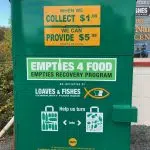B.C. funding rapid-access treatment, public safety to address overdose crisis
VANCOUVER — People on the front lines of British Columbia’s opioid overdose crisis are applauding the government’s announcement of more funding in an attempt to stem the death toll.
Premier John Horgan announced Friday the province will spend more than $31 million over the next three years to increase access to treatment programs, offer more free kits of the overdose-reversing drug naloxone, help front-line workers and empower communities to keep people safe.
Speaking to a crowd of local politicians at the Union of B.C. Municipalities Convention, Horgan noted 876 people died in the province between January and July of this year.
“These are our sons and our daughters, our brothers and our sisters, our mothers and our fathers. And if today is an average day, four more people will die. And that’s just not acceptable to me and I know it’s not acceptable to you,” Horgan said.


